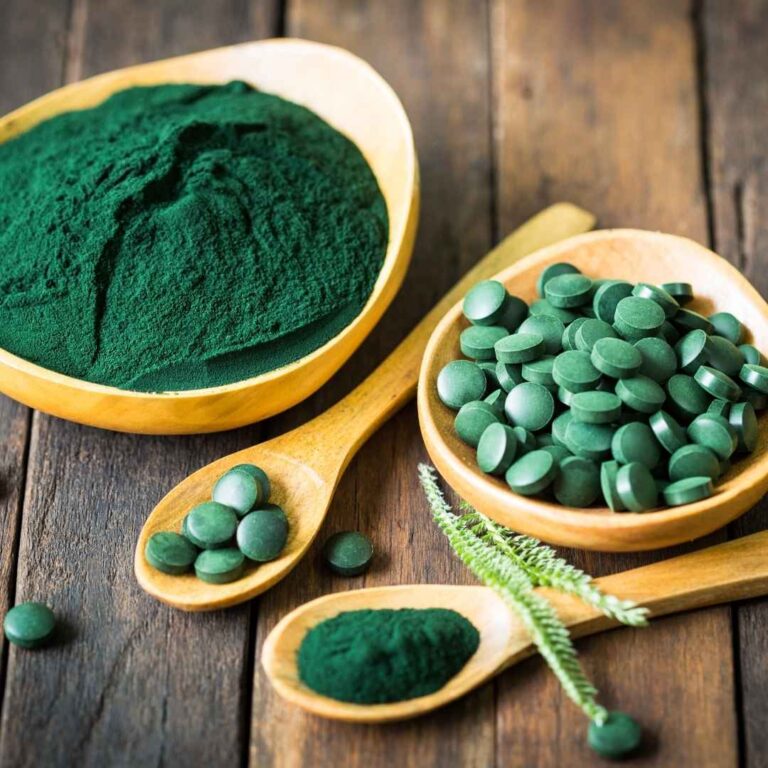Anyone who takes supplements for stress reduction or pre-workouts will typically find kanna listed among the ingredients.
The ingredient kanna appears in pre-workout formulas, but what precisely is it, and what are its functions? The succulent plant that produces Kanna extract originates from South Africa.
This pharmaceutical agent enhances cognitive abilities, provides relief for anxiety disorders and depression, and serves as treatment for persistent pain cases.
Kanna has existed for over 300 years to treat its soothing effects, which San and Khoikhoi peoples living in South Africa have traditionally chewed on.
Through this text, you will get a thorough breakdown of the Kanna herb and its significance for natural well-being, whether you have just started learning about it or not.
What is Kanna?
The flowering succulent Kanna provides fascinating advantages to users. Bushy, well-drained hills form the natural habitat of this plant in South Africa, which traditional healers from the San and Khoikhoi tribes have used over many generations for medicine.
When consumed, Kanna shows three key features, which include mood elevation while providing anxiety and stress relief, together with relaxation benefits and pain reduction capabilities.
For many generations, humans have utilized kanna as an herbal remedy to gain happiness and well-being.
The slang term for this plant offers direct insights into its meaning. Under African tradition, the name kanna signifies a plant suitable for chewing because people consumed it in this manner.
Sceletium tortuosum stands as the Latin name, which reveals additional information about the plant.
After the drying process takes place, the leaves develop a framework that resembles bones. The Latin term sceletus describes leaf veins that make them conspicuous for identification.
Where Is Kanna Grown?
South African farmers cultivate Kanna primarily in its natural arid habitat, mainly in the Western and Eastern Cape provinces’ rocky and dry regions.
The plant has adopted survival strategies for hard environments, which enable farmers to grow it successfully. San and Kiokhoei tribes traditionally obtained Kanna from natural habitats, yet contemporary farmers now raise the plant on farms for customer needs.
The plant-matter production starts with controlled leaf and stem collection, followed by drying, which results in different end-products.
Sustainable farming practices must be practiced for Kanna’s natural environment to be protected and for the future accessibility of the plant.
Traditional Uses of Kanna
Kanna stretches its historical roots back to ancient periods. Traditional South African herbalism recognizes kanna as an essential plant that the San hunter-gatherers and Khoi people have been using as a foundational component of their practices.
Traditional users consumed kanna for treating both physical injuries and for their emotional and spiritual needs.
People used dried and fermented kanna in their regular lives to satisfy their thirst and obtain additional energy. Traditional South African social customs regarded kanna similarly to our contemporary standards of coffee or alcoholic beverages.
During traditional times, kanna served medical purposes to relieve toothaches, headaches, and abdominal pain. Many communities used kanna both to control pain and as a regional anesthetic compound.
Until now, the medicinal qualities that people most value in kanna consist of its mood-uplifting and anxiety-reducing properties, leading to spiritual contentment.
Research today puts these properties under scientific evaluation by showing that kanna can be an effective therapeutic agent against depression and anxiety, along with other mood disorders. Historically, kanna holds cultural significance as a strong spiritual healing remedy.
Modern Uses of Kanna
Kanna has expanded its reach with global wellness users who accept it as a modern therapeutic plant outside traditional applications.
This substance has become popular as a natural solution because it helps people manage their mental and emotional states. Below are some of the most common modern uses of Kanna:
1. Mood Enhancement
The primary known characteristic of Kanna relates to its uplifting capabilities on human mood. Kanna engages with serotonin activity within the brain, which contributes to both feelings of happiness and relaxation. Because of Kanna, users often achieve an inner feeling of serenity.
2. Stress and Anxiety Relief
Patients choose Kanna as their preferred solution because of its relaxation properties to manage their anxiety and stress effectively.
The compound provides a regulatory function that helps manage the body’s stress reaction, therefore creating tranquil and balanced states.
3. Cognitive Support
Available research indicates Kanna might benefit cognition through its ability to improve focus and mental clarity. The substance presents a possibility for users aiming to boost productivity, together with preserving mental clarity during daily activities.
4. Social and Emotional Well-Being
Throughout history, Kanna has served as a traditional remedy for developing better social bonds among people and improving emotional connections.
Kanna produces mood-enhancing impacts that enhance the enjoyment level while improving the depth of social experiences.
Effects Of Kanna
Stress and anxiety management has been the traditional purpose for which people have used kanna. People currently use kanna as an active compound for stress reduction, but combined administration provides cognitive support in addition to anti-anxiety benefits.
Currently, there is insufficient scientific evidence that shows the effectiveness of kanna extract supplements alongside other interventions.
Several research investigations on the effects of kanna are scarce, and most studies examine Zembrin as their primary subject. Here’s more about the potential effects of kanna:
1. Potentially Helps Treat Depression
Research involving animals, along with small human studies, has presented some proof that kanna displays antidepressant capabilities in patients presenting with Major Depression alongside Depression-related pain.
It is necessary to conduct additional research before understanding how well kanna works as a depression treatment and what unwanted side effects (including muscle control issues) might negatively impact its mood-enhancing properties.
2. May Help Relieve Anxiety or Stress
The main recognized effect of kanna consists of achieving relaxation while it works to reduce signs of anxiety alongside managing stress episodes and depressive symptoms.
Research supports how Sceletium wallichi functions to create wellness feelings and assists in treating both depression and clinical anxiety, and mild daily depression.
Anxiety symptoms decreased in adults who participated in a research study that used Zembrin under double-blind placebo conditions. The brain’s amygdala seems to respond to kanna intake, according to research findings.
3. Improves energy and prevents fatigue
Kanna helps reduce body tension and stress; thus, you may experience better restful sleep while gaining increased daytime energy.
Historically, the kanna plant was also used to quench thirst and for healing, social, and spiritual purposes.
Active Ingredients of Kanna
Kanna is packed with important plant compounds called alkaloids. Plants contain natural compounds that produce different effects on human physiology.
Kanna compounds travel to the central nervous system to affect brain and spinal cord receptors, which presumably explains why people use kanna for mood improvement.
The alkaloids present in kanna showed effectiveness in serotonin reuptake inhibition according to double-blind analysis studies.
Properties of Kanna
- Antimicrobial: Helps fight off harmful microbes.
- Anti-inflammatory: Soothes inflammation in the body.
- Antioxidant: Protects cells from damage caused by free radicals.
- Antidepressant: Lifts mood and promotes feelings of well-being.
- Anti-anxiety: Relieves stress and anxiety.
- Anti-HIV: Shows potential in fighting against HIV.
- Radical scavenging: Clears out harmful radicals from the body.
How Safe Is Kanna?
Scientific research demonstrates that kanna exhibits safety factors for the general populace. The research trial involving 37 healthy volunteers who used kanna extract for three months showed no significant impact on vital signs and health measurements.
The kanna group exhibited better overall well-being, which included enhanced sleep quality as well as reduced stress compared to the placebo group members.
Most participants who took kanna extracts faced minor side effects, including headaches, together with abdominal pain, but these symptoms were more frequent among those in the placebo condition.
New scientific studies must measure kanna’s safety performance because researchers require better comprehension about its long-term consumption and cross-stimulation effects with other substances.
How to Consume Kanna
South Africans customarily produced kanna by fermenting the plant, which produced the product known as kougoed. The fermented version contains more alkaloids than when dried kanna plants are used.
The dried or fermented plant served as the traditional method for kanna ingestion by mouth. People can consume kanna today through an extract form or as a powder, along with drinking it in tea or eating treats such as chocolate candies.
Wrapping Up
The natural herb Kanna shows versatility in modern wellness practice while keeping a lengthy medical history behind it. The natural herb Kanna brings multiple health benefits, including mood enhancement, stress relief, and cognitive aid, which make it a useful choice for wellness practices.
The blog introduces basic Kanna concepts that help new users make educated choices about this herb. Everyone using natural remedies should handle Kanna with interest and honor while practicing sensible use.
The key to accessing this remarkable plant’s benefits is through proper use, so you can discover how it gives support to your road toward increased health.
Also, Read:





